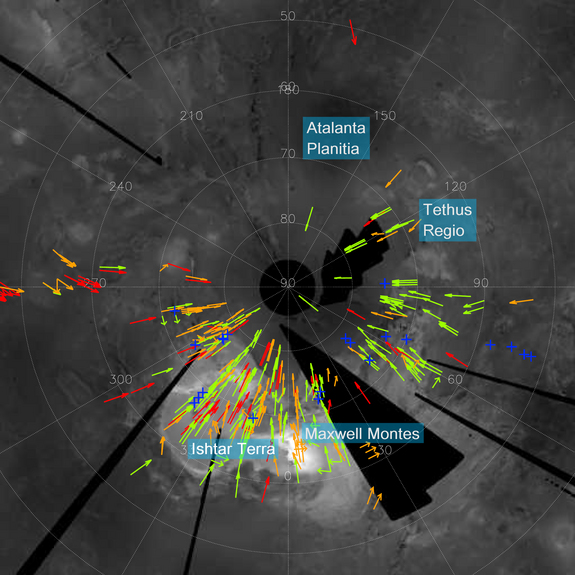Megan Gannon
Space.com
January 22, 2014

Credit: ESA/Venus Express/VMC/A. Piccialli et al., 2014
A European spacecraft circling Venus has captured high-resolution images of strange waves in the clouds whirring above Earth’s nearest neighbor. These ripples could help scientists understand how Venus’ hellish surface shapes its atmosphere.
On Venus, mountains and volcanoes rise above vast lava plains and temperatures are hot enough to melt lead. But this hostile landscape is largely obscured by the planet’s dense, toxic atmosphere with clouds blown by winds up to 186 to 248 mph (300 to 400 km/h).
The European Space Agency’s Venus Express snapped images of gravity waves in those clouds. Not to be confused with ripples in space and time known as gravitational waves, the gravity waves in a planet’s atmosphere can occur when winds whip over geological features like a mountain’s face or crater wall and the updraft rises and sinks in a layer of stable air above. Condensation in the rising air can produce clouds, creating a pattern of waves moving in the same direction, spaced at regular intervals.
The Emergency Election Sale is now live! Get 30% to 60% off our most popular products today!


